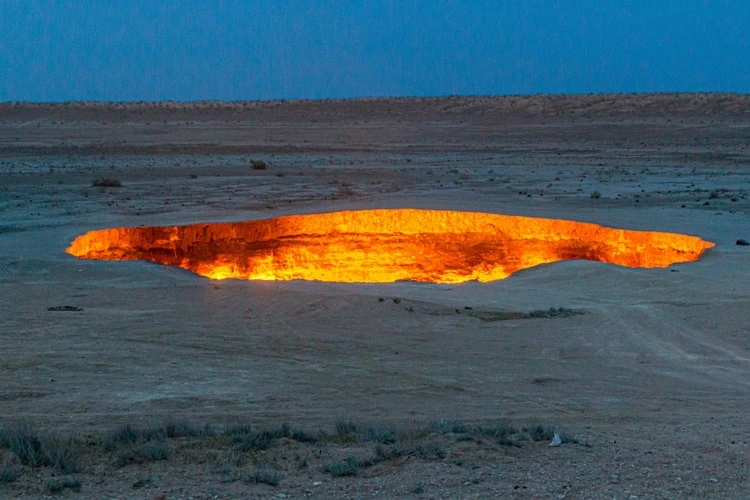
Discover more about Turkmenistan’s ‘Gates of Hell’ – the fiery pit attracting both tourists and national concern
For more than half a century, an inferno has raged in the heart of Turkmenistan’s Karakum Desert. Known as the Darvaza gas crater or, more dramatically, the ‘Gates of Hell’, this fiery pit, a gaping wound in the Earth, located about 260 kilometres north of Turkmenistan’s capital, Ashgabat, has become both a tourist attraction and a source of national concern. Gurbanguly Berdymukhamedov, Turkmenistan’s president until 2022, repeatedly called for the flames to be extinguished, citing environmental damage, economic losses and potential health hazards.
Check out our other phenomena articles…
It’s believed that the crater was formed in 1971 when a Soviet drilling accident led to a rig collapsing into a gas cavern. Turkmenistan has one of the world’s largest reserves of natural gas. The fires were probably started later to prevent the spread of poisonous gases. However, contemporary information about the disaster was deliberately destroyed, leaving no paper trail linking it back to the Soviet mining concern.
Regardless of the precise timeline, the Soviets, worried about toxic gases spreading, set fire to the escaping methane, likely anticipating that the flames would extinguish quickly. Now, more than 50 years later, it seems they vastly underestimated the reserves of natural gas present beneath the surface. The 70-metre-wide and 30-metre- deep crater, filled with hundreds of burning fires, can be seen from miles away.
In 2013, Canadian explorer George Kourounis became the first person to descend into the crater, describing it as a ‘Coliseum of fire’, its roaring sound similar to that of a jet engine. He said he felt ‘like a baked potato’ in his heat-resistant gear. The expedition aimed to collect soil samples to check for microbial life that can survive in such an extreme environment.
‘We are losing valuable natural resources’, declared former president Berdymukhamedov, ‘for which we could get significant profits and use them for improving the well-being of our people.’ However, despite this pronouncement and multiple attempts to douse the flames, the crater continues to burn.




